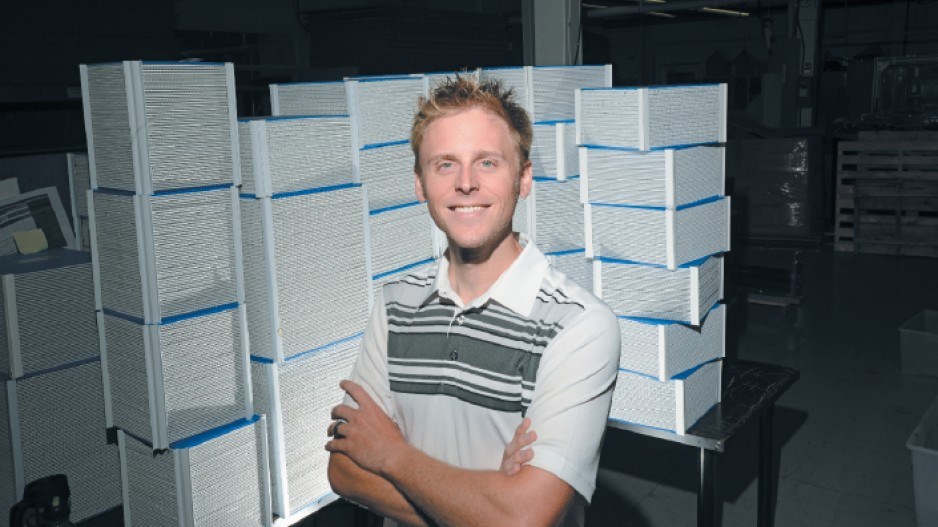A few years after dPoint Technologies Inc. formed in 2004, it started becoming apparent the hydrogen fuel cell industry was not taking off as predicted, leaving the Vancouver startup with a product – fuel cell humidifiers – that just weren't moving.
So it did what Silicon Valley might call a pivot, and thanks to a new application for its technology, it has enjoyed revenue growth of 1,500% in five years, putting it at No. 7 on Business in Vancouver's 2013 fastest-growing companies list.
"We spoke with our fuel cell customers and got the sense that commercialization was still a few years away and the investment community was cool on fuel cells," said dPoint CEO James Dean, a former Ballard Power Systems Inc. (TSX:BLD) employee.
"We started thinking about what else we were going to do, examining other uses for this technology to enable the fuel cell industry to catch up and actually become a large enough area for a company to survive," added dPoint product manager Brian Roth. "Because on the fuel cell product alone, we likely wouldn't still be here."
The company's main product was a polymer heat and water transfer membrane that is used to heat and humidify fuel cells.
For a fuel stack to work properly, the air going in needs to be hot and fully saturated with humidity. The dPoint membrane both preheats and humidifies the fuel cell.
The company explored other potential uses for the membrane and landed on energy recovery in the ventilation systems in buildings. The dPoint energy recovery ventilator (ERV) and heat recovery ventilator (HRV) are now being sold to ventilation manufacturers.
The timing was right because building codes in North America are adopting higher standards for air quality control in new buildings, and now the ERVs and HRVs are outselling the company's fuel cell humidifier 10:1.
This year, dPoint expects to do about $200,000 in sales on its fuel cell humidifiers, compared with $2.4 million to $2.6 million in ERV and HRV sales, Roth said.
That's still not enough to turn the profit corner, however. Although it had $2.5 million in revenue in 2012, dPoint had a loss of $1.5 million.
"We continue to invest in R&D and sales and marketing, which is deferring our profitability," Dean said. "However, we are targeting to be profitable in 2015."
Technology companies often have a high cash-burn in the research and development and commercialization phase. Global Relay, which tripled its net income between 2011 and 2012, took six years before it started to break even, said Global Relay CEO Warren Roy. It has been profitable ever since.
Roy said a critical stage for many technology companies is switching focus from R&D to sales, marketing and distribution, once it has a commercial product. It's the start of a whole new chapter, and it can be costly.
"Sales people are your most expensive distribution channel by far, because you're paying an experienced sales person a lot of money," Roy said.
Global Relay managed to keep its own distribution costs down by striking strategic partnerships with companies like Thomson Reuters Corp. (TSX:TRI).
"They're a huge global company, so they have a gigantic sales force and we partnered with them and leveraged the sales force, effectively," Roy said.
"They needed our technology, we needed their distribution. Partnerships are by far your lowest cost distribution channel." •




